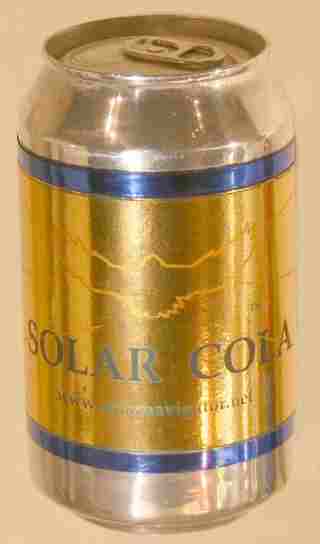|
Cambridge University Eco Racing
(CUER) was created by
a group of Cambridge students on exchange at the Massachusetts Institute
of Technology (MIT). Inspired by the MIT Solar Electric Vehicle Team, they
decided to form a similar Cambridge-based team in January of 2007. Excited by the idea, other
students from Cambridge joined the team.

In early 2007 the team received backing from the Cambridge University
Engineering Dept (CUED). In dialogue with teaching staff, it was decided
that major systems would be developed through fourth year projects. This
was to allow the team to devote more time to development of the car, and
to ensure continuity through to the next generation.
This Solar Electric Vehicle will be entirely designed and manufactured by
students, aided financially and through the donations of materials and
components by corporate sponsors.
CUED teaching staff were enthusiastic and came out to strongly support the
team. With their backing, CUER was formed – a student initiative with
the aim of building a Solar Electric Vehicle to compete in the 2009 World
Solar Challenge.
Drawing on expertise from the spectrum of
engineering, such as Materials Science, Mechanics, Structural Design,
Aerodynamics and Electronics, solar racing involves many challenges.
Generally, these vehicles are designed and built by student-led teams from
some of the world’s leading universities, using the expertise of faculty
and industry to aid them. Currently, the two major races are the World
Solar Challenge in Australia and the North American Solar Challenge, which
are held in alternating years.
These races are cross country marathons on public roads; solar cars are
capable of travelling at or above the speed limit, and have been known to
pick up speeding fines!
Vehicles must be light and aerodynamic, while meeting the stringent safety
requirements of both the race rules and local authorities. They must be
robust enough to cover several thousand miles over roads which are not
always in good condition, and do so entirely on power derived from the
sun.
Average Race Speed: 60mph
Weight: 200kg
Array Power: 1500W
Motor Efficiency: 90+%
Drag Coefficient, CdA: 0.12
Power losses from aerodynamic drag account for 70% of all power lost at
cruising speeds (about 60mph). Solar Electric Vehicles must therefore have
a streamlined shape, with low frontal area to minimize this drag. Bodies
are computer-modelled, optimised using Finite Element Analysis, and tested
in wind tunnels before being manufactured from strong and light composites
such as Kevlar and Carbon Fibre.
Usually a steel tubular space frame or composite monocoque, to give a
stiff, strong shape designed for safety at minimum weight. Race
regulations specify crash requirements, driver seating postion and the use
of a role bar for safety in the event of a crash.
Li-Ion, Nickel Metal Hydride or Lead Acid batteries are commonly used,
with each variety's capacity limited to approximately 5kWhr by race rules.
Battery protection circuitry and ventilation ensure safe operation during
a demanding race.
Solar array area is limited by race rules to 6m2. Space-grade arrays of
this size, made from rejected satellite solar cells, have around 1.5kW
peak output power, at 100V, with an efficiency approaching 30%. Terrestial
silicon cells, while cheaper, have an efficiency of roughly half that.
A three-wheeled configuration is common for Solar Electric Vehicles, with
two wheels at the front, which steer, and a rear driving wheel. Brushless
DC hub motors are often used because of their high efficiencies (above
90%). This also allows for regenerative braking which recovers energy that
would otherwise be dissipated as heat in disc brakes.
A solar array's output varies through the day depending on the position of
the sun and cloud cover. Power point trackers optimize battery charging
voltage to extract maximum power from the array at any conditions.
Specially designed to give minimum rolling resistance, the second largest
cause of power loss. As rolling resistance is a dependant on the weight of
the vehicle, it is important to use light materials as much as possible.
Telemetry allows monitoring of vehicle performance and communication from
driver to support vehicles. Race strategies vary depending on this data,
with the aim being to make full use of available array power while
conserving battery power.
THE
CUER TEAM LEADER
Martin
McBrien
Mechanical Engineering
dmm41@cam.ac.uk

Martin joined the MIT Solar Electric Vehicle Team in September 2006.
Working alongside veterans of several solar races, he was able to learn a
lot about how to build a successful solar car, and gained valuable
experience working on various projects for the as-yet-unnamed solar bike
the team is currently working on, including composite work, egress design
and fundraising.
After deciding to start a Cambridge University team, he assembled a strong
team of fellow exchange students, and has been working tirelessly towards
the aim of having a working vehicle in June 2008, an ambitious but
reachable target. His enthusiasm for this project has allowed him to bring
a range of Professors on board as advisors, and he is already charming
potential sponsors.
Martin is studying for an MEng in Mechanical Engineering, with an interest
in aerodynamics as well. In his spare time, (rare these days!) he plays
guitar, has an interest in photography, and plays a range of sports,
including being captain of the Cambridge-MIT Exchange students' basketball
team.
Exposure to bright, enthusiastic young engineers.
Major systems development is undertaken by
fourth-year undergraduates as part of their final-year projects; students
working on these projects gain early exposure to working on real
engineering projects.
Promotion of sustainability and cultivation of a good public image.
With an infinite range and zero emissions, there is
no more green mode of assisted transportation. Become a platinum or gold
sponsor and your company will be associated with the team in all media
coverage.
Have your name associated with a team competing in global events,
gaining media attention across the world.
Become a Platinum, Gold or Silver Sponsor, and your
logo will be seen by thousands of spectators as the car traverses the UK,
North America and Australia, and by many more people through coverage in
newspapers, online, and on television.
Help students to develop their skills working on a real-world design
project.
Students will gain experience working as part of a team,
meeting a deadline set by race dates, and operating within a set budget.
A unique marketing opportunity.
CUER is one of only two Solar Electric Vehicle Teams in
the UK, and less than forty worldwide; Platinum sponsors will have the
opportunity to hold a publicity event with the car and team.
| |
| PLATINUM |
GOLD |
SILVER |
BRONZE |
ADOPT-A-CELL |
|
|
|
Donation
(per yr)
|
|
Team
Newsletter
|
|
Acknowledgement
on website
|
|
Logo
on website
|
|
Logo
on uniforms
|
|
Logo
on transportation
|
|
Logo
on rear half of car
|
|
Logo
on front half of car
|
|
Prominent
display of logo on website
|
|
Publicity
event with team
|
|
|
|
£20,000+
|
£10,000+
|
£5,000+
|
£1,000+
|
£50
|
|
Yes
|
Yes
|
Yes
|
Yes
|
Yes
|
|
Yes
|
Yes
|
Yes
|
Yes
|
|
|
Yes
|
Yes
|
Yes
|
Yes
|
|
|
Yes
|
Yes
|
Yes
|
|
|
|
Yes
|
Yes
|
Yes
|
|
|
|
|
Yes
|
|
|
|
|
Yes
|
|
|
|
|
|
Yes
|
|
|
|
|
|
Yes
|
|
|
|
|
|
|
Head of Sponsorship sponsorship@cuer.co.uk
Captain: captain@cuer.co.uk
|
ORGANISATION
A-Z
|
CAR'S
NAME
|
TEAM
NAME
|
|
Aristotle
Uni of Thessaloniki, Helios
|
Helios
|
Faculty
of Engineering
|
|
Arizona
Solar Racing Team - USA |
|
Arizona
Solar Racing Team |
|
Auburn
University |
Sol
of Auburn |
Sol
of Auburn |
|
Aurora
Team, Australia |
Aurora |
Aurora
Vehicle Association |
|
Bochum
Solar Car Team |
|
Das
SolarCar der Fachhochschule |
|
California
Poly S University |
SLO
Burn Sidewinder |
San
Luis Obispo |
|
Cambridge
University |
|
Eco
Racing Team |
|
Clarkson
Uni Solar Car Team, USA |
|
The
Solar Knights |
|
Delft
University - Holland |
NUNA
I & II
2003
|
|
|
Dell
Winston School |
The
Hunter |
Solar
Car Challenge |
|
Desert
Rose, Northern Territory Uni |
FUJI
DESERT ROSE |
|
|
Drexel
SunDragon Home Page |
|
|
|
École
de technologie supérieure Quebec |
Eclipse
V (5) |
Éclipse
Vehicular Solaire |
|
École
Polytechnique de Montréal
|
Esteban
|
|
|
Eko-Auto
Poland |
Eko-Auto |
|
|
Electron
Analytic Corporation
|
Dark
Horse
|
EAC
Skunkworks
|
|
George
Washington University |
|
George
Washington Uni Solar Car |
|
Georgia
Institute of Technology |
Solar
Jackets |
Solar
Jackets |
|
Heliodet,
Germany |
Heliodet |
Heliodet,
Solar Car Team |
|
Helios
- Lille, France |
Hélios IV |
Hautes
Etudes d'Ingénieur |
|
Honda
Car Company |
Honda |
|
|
Illinois
State University
|
Surya,
Ratha, Mercury
|
Illinois
State University
Team
|
|
Iowa
State University
|
Fusion
|
Team
PrISUm
|
|
Jonasun
Japan |
Orbit |
Solar
Car Paviion |
|
Kansas
State University
|
Paragon
|
Solar
Car Racing Team
|
|
Los
Altos Academy of Engineering |
|
Los
Altos Solar Car Team |
|
Massachusetts
Institute of Technology
|
Tesseract
|
MIT
|
|
McGill
University
Monteal, Canada
|
iSun
|
Team
iSun
|
|
McMaster
University
|
Phoenix
|
McMaster
Uni
Solar Car Project
|
|
Messiah
College
Grantham, Penns |
Genesis
II |
Genesis
II Solar Racing Team |
|
Michigan
State University
|
|
Solar
Racing Team
|
|
Michigan
Technological University |
|
Solar
Car Team |
|
Minnesota
S Uni-Mankato/Winona S Uni |
|
Minnesota
Solar
Car Team |
|
North
Dakota State University
|
The
Double Deuce
|
Sunsetters
- Solar Race Team
|
|
Northwestern
University
|
N'Uvation
|
Northwestern
University
|
|
Nuon
Solar Team, Netherlands |
Nuon
3 |
Het
Nuon Solar Team |
|
Osaka
Sangyo University, Japan |
OSU
model S |
Solar
Car Team |
|
Prairie
View A&M University
|
Solaris
|
Sun
Panthers
|
|
Principia
College
|
RA
6
|
Principia
College
Solar Car Team
|
|
Purdue
University
|
SPOT
2
|
Purdue
University
Solar Racing
|
|
Queen's
University Canada
|
Radiance
Gemini
|
Queen's
Solar Vehicle Team
|
|
Red
River College
|
Red
River Raycer
|
Red
River College Solar
Car Team
|
|
Rice
University |
|
Rice
University |
|
Rose-Hulman
Institute of Technology
|
|
Rose-Hulman
Solar Car Team |
|
Southern
Illinois Uni Edwardsville
|
Cougar
Cruiser
|
Southern
Illinois University
|
|
South
Bank University, UK |
Mad
Dog |
South
Bank Mad Dog Team |
|
South
Dakota School Mines & Tech |
Solar
Motion |
South
Dakota Solar Motion Team |
|
Southern
Taiwan University Tech |
|
Southern
Taiwan Solar Team |
|
Stanford
University
|
Solstice
|
Stanford
Solar Car Project
|
|
Tamagawa
University - Japan |
|
Tamagawa
Solar Challenge Project |
|
Team
Futura, Italy |
FUTURA
2 |
Team
Futura |
|
Team
SunLake - Japan |
Phaethon
model |
Team
SunLake TOYOBO |
|
Texas
A&M University
|
Columbia
Sunraycer
|
Texas
A&M
Motorsports Team
|
|
The
Power of One
- Toronto |
Xof1 |
The
Xof1 solar car team |
|
Tufts
University
|
ANNE
E. B. II
|
Nerd
Girls
|
|
University
of Alberta |
|
University
of Alberta Team |
|
University
of Arizona
|
Drifter
|
Solar
Racing Team
|
|
University
of Calgary
|
|
UC
Calgary
Solar Car Team
|
|
University
of California-Berkeley |
CalSol |
California
Calsol Team |
|
University
of Kansas |
Solution,
CATalyst |
KSU
Solar Car Racing Team |
|
University
of Kentucky
|
Gato
del Sol II
|
Solar
Car Team
|
|
University
of Massachusetts |
Spirit
of Mass 413 |
Lowell
Solar Racing Team |
|
University
of Michigan
|
Momentum
|
University
of Michigan
|
|
University
of Minnesota
|
Borealis
III
|
U
of M Solar Vehicle Project
|
|
University
of Missouri
- Columbia
|
Suntiger
VI
|
The
Mizzou Solar Car Project
|
|
University
of Missouri -
Rolla
|
Solar
Miner V
|
Solar
Minor Car Team
|
|
University
of North Dakota |
Subzero
3 |
Team
SubZero |
|
University
of Ontario Institute of Tech |
|
UOI
Solar Vehicle Team |
|
Uni
of New South Wales SCR Team |
UNSW
Sunswift III |
New
South Wales SCR Team |
|
University
of Patras, Hermes |
|
Solar
Car Team |
|
University
of Pennsylvania
|
Keystone
|
Penn
Solar Racing
|
|
University
of Queensland |
Sunshark |
Queensland
Solar Team |
|
University
of South Australia |
Ned
KELLY |
SA
Solar Car Consortium |
|
University
of Texas at Austin
|
Solar
Steer
|
Solar
Vehicles Team
|
|
University
of Texas at El Paso
|
|
Solraycers
|
|
University
of Toronto
|
Blue
Sky
|
Blue
Sky Solar Racing
|
|
University
of Toulouse |
Heliotrope |
Heliotrope
Solar Car Team |
|
University
of Utah
|
|
Vehicle
Design Team
Utah
|
|
University
of Virginia
|
|
UVa
Solar Car Team
|
|
University
of Waterloo
|
Midnight
Sun VIII
|
Midnight
Sun Solar Race Team
|
|
University
of Western Ontario
|
Sunstang
|
Sunstang
USP
Solar Car Team
|
|
USP
Solar Car Team |
|
USP
Solar Car Team |
|
Western
Michigan University
|
Sunseeker
05
|
W
Michigan Solar Car Team
|
|
Yale
University
|
The
John Lee
|
Team
Lux
|
SOLAR CAR EVENTS
American
Solar Challenge American
Tour de Sol
American
World Solar Challenge - Formula Sun
Australian
World Solar Challenge
Canadian
Solar Discovery Challenge
Dream
Cup Solar Car Race Suzuka 2003 - Japan
Japanese
World Solar Car Rallye
North
American Solar Challenge
Phaethon
2004
Solar
Express - Solar Bike Race
Sunrayce
SunRace
2003 - Australia
World
Solar Car Rally - Japan
World Solar Rallye
- Japan
SOLAR
CAR PART FINDER
A
taste for adventure capitalists

Solar
Cola - a healthier alternative.
|

